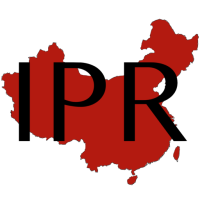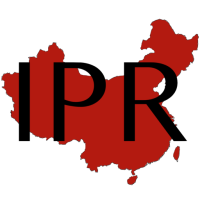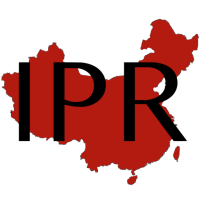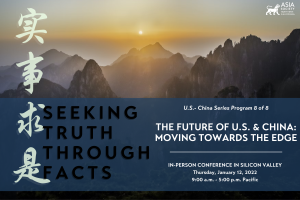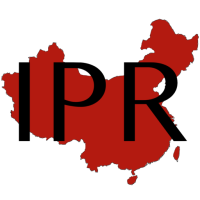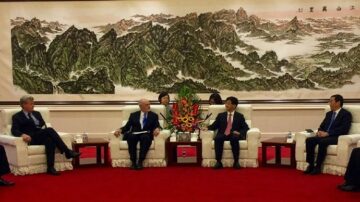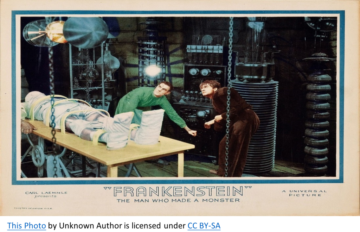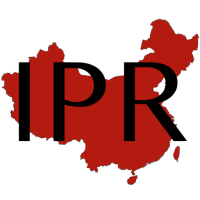The State Administration for Market Regulation (SAMR) – released its Anti-monopoly Guidelines in the Field of Standard Essential Patents (Draft for Public Comment) (“Draft SEP Guidelines”) (关于标准必要专利领域的反垄断指南(征求意见稿)) on June 30, 2023. Comments are due by July 29, 2023.
This is the first time comprehensive SEP-specific rulemaking has been pursued by SAMR. The document originated from the Number 1 Directorate for Antimonopoly Enforcement (反垄断执法一司). The agency that will ultimately oversee interpreting the Draft SEP Guidelines is unclear at this time (see Article 20 of the Draft SEP Guidelines). The Draft SEP Guidelines were released one day after the revised Rules for Prohibiting Abuse of IPR To Eliminate or Restrict Competitive Conduct (禁止滥用知识产权排除、限制竞争行为规定) (the “IPR Rules”) on June 29, 2023. The IPR Rules will take effect on August 1, 2023. Note that the IPR Rules were listed as order number 79 of SAMR for the year 2023(2023年6月25日国家市场监督管理总局令第79号公布 自2023年8月1日起施行)which suggests that they are at the level of “Rules” (部门规章) under China’s Law on Legislation, which may be important for determining relative legislative hierarchies. They are not formally State Council Regulations, as some commentators have suggested. The “rapid-fire rulemaking” of the Draft SEP Guidelines after the release of the IPR Rules suggests that IP-related antitrust enforcement, including SEP-related enforcement, continues to be a high priority for the Chinese government. The elevation of antitrust agencies within SAMR to the deputy ministerial level in November 2021 and the imposition of penalties upon such companies as Alibaba, the ANT Group, and many other tech companies are other recent evidence of the continuing importance of pursuing and tech and IP-related antitrust investigations in China’s current political climate.
Rules and Guidelines on IP and Antitrust: Who is on First?
As has been the case for many years, antitrust-related regulations create a confusing legislative map with possibilities for misunderstandings or conflict among new and old regulations and agencies.
The IPR Rules replace similar rules that were first enacted in 2015 by SAIC (see Art. 33). Prior to the merger of antitrust authorities under SAMR, NDRC had also been drafting antitrust guidelines for IP. IPR-related guidelines and rules have a legislative heritage that reaches back to at least as early as 2009 (I also discussed in this blog the public fifth SAIC draft of 2012). More recently, the State Council Antimonopoly Commission passed Antimonopoly Guidelines in the Field of Intellectual Property in 2019 (国务院反垄断委员会关于知识产权领域的反垄断指南), which was promulgated by SAMR in 2020 (the “IPR Guidelines”). The IPR Guidelines were passed pursuant to current Article 12 of the Antimonopoly Law as amended, which delegates authority for AML policies to the Antimonopoly Commission (for a good translation source of the AML see Chinalawtranslate). These IPR Guidelines confusingly also first appeared in a non-transparent way in a book that I have never seen, the “2019 Compendium of Antitrust Rules and Guidelines” (2019 年反垄断規章和指南汇编).
The Draft SEP Guidelines repeatedly refer to the IPR Guidelines (see e.g., Chapter 2 of the Draft SEP Guidelines). My guess is that the Draft SEP Guidelines will be enacted at a similar legislative status as the IPR Guidelines and that both “Guidelines” will inform the behavior in IPR-related AML administrative enforcement. If they are enacted at a similar legislative level, the particular should govern the specific, and the newer should govern the general, making the Draft SEP Guidelines more important to SEP enforcement activities. In any event, this may ultimately leave three sources of regulatory guidance on IP–related antitrust below the level of the AML itself: the Draft SEP Guidelines (once they are finalized), the IPR Guidelines and the IPR Rules. The Zhonglun law firm has published a useful comparison of the IPR Rules and the Draft SEP Guidelines which is available here.
Certain provisions of the Draft SEP Guidelines need to be viewed in the context of rulemaking by non-AML agencies. For example, the Draft SEP Guidelines seek to regulate anti-competitive aspects of standardization activities involving patents, such as a failure of a participant in a standards-setting activity to disclose relevant patents. Rules that address this type of behavior were enacted in 2013 by the Standardization Administration of China and the State Intellectual Property Office in the Provisional Rules on Management of Chinese National Standards and Patents (国家标准涉及专利的管理规定(暂行)) (the “SAC Provisional Rules”). Article 5 of the SAC Provisional Rules provides that there are “legal consequences” for failing to disclose patents if you participate in an SDO. See, e.g., comments of the US-China Business Council, as well as comments of the American Bar Association. The scope of non-AML approaches to regulating technology transfers in China also extends beyond SAC to other agencies and rules, including China’s Pricing Law, rules on technology transfer (such as the former TIER or Administration of Technology Import/Export Regulations), MofCOM’s role in international trade disputes involving SEPs, policy efforts of MIIT and SIPO/CNIPA, as well as policy efforts undertaken by the SPC and local courts in the course of their adjudication of SEP disputes.
Harmonization and International Synthesis
An important factor in anticipating antitrust developments in IP in China is the desire, where possible, for harmonization by China with international standards, including with leading antitrust enforcement regimes, particularly the European Union. The European influence historically derives from such landmark EU cases as Huawei v. ZTE, the significance of European institutions such as ETSI, and the introduction (and occasional expansion) of European antitrust concepts such as unfairly high pricing into Chinese law and practice. As I have pointed out elsewhere, it is important to distinguish a foreign “transplant” in this area from a “false friend” practiced quite differently or under different conditions.
European policies may have also affected the drafting and timing of these AML and IP policies. The most significant policy may be the EU’s Proposal for a regulation of the European Parliament and the Council on standard essential patents and amending Regulation (EU) 2017/1001, officially released on April 27, 2023. This proposed policy would more deeply involve Europe in SEP licensing matters by creating an administrative tribunal to perform mandatory “essentiality checks” of certain SEPs, set royalty rates for those SEPs, mandate public disclosure of licenses, and provide mandatory but non-binding conciliation for disputes.
The EU proposal notes that it intends to promote innovation and R&D, consumer interests, and rate-setting transparency in the EU. What it shares with the Chinese antitrust approach is a greater interventionist orientation in setting prices, which appears to be mostly “implementer” (automobile industry) friendly. It is also doubtful that the proposed policy will dramatically help innovation or SMEs. As I have pointed out in numerous filings and presentations, China is more likely to benefit from SME-oriented policy towards IP and licensing due to some factors such as the high cohort of non-practicing entity litigation in China, the higher cohort of non-service (outside of employment) inventions in China, and the greater presence of patent “cockroaches” in China, which are like patent trolls, but are omnipresent and less demanding. Nonetheless, I generally agree with Prof. Adam Mossoff in a recent IP Watchdog article that China will likely “exploit this shift toward a regulatory regime and away from evidence-based decision-making by EU courts.”
The EU proposal could also accelerate a shift from Chinese IP adjudication to Chinese administrative adjudication within China. This trend is not confined to SEPs and includes CNIPA’s emerging role in high-tech patent infringement disputes, such as the recent case brought by Huawei against Xiaomi at CNIPA. The EU case filed at the WTO has also underscored to China the limitations of utilizing judicial patent infringement remedies, such as antisuit injunctions, to address the global rate setting for SEPs. This spate of AML rulemaking by SAMR may be due to its confidence that these limitations are not necessarily found in antitrust regimes. The AML and its administrative mechanisms also offer China an important vehicle for a global rate setting that is relatively free of the long history of IP-related treaties and practices that focus on territoriality.
Despite the weakening of the WTO and its dispute settlement mechanism, I personally believe that WTO tools remain underrated in their potential for addressing industrial policy and other distortions in national SEP licensing practices. The ongoing WTO dispute by the EU (DS611), including its demand for fuller judicial transparency for cases of “general application” can help in establishing judicially determined market signals for SEP pricing and litigation practices. Administrative agencies such as SAMR are not exempt from these transparency requirements. In my view, the appearance of the IPR Guidelines in a 2019 book, the “2019 Compendium of Antitrust Rules and Guidelines” (2019 年反垄断規章和指南汇编) one year before public promulgation is a “rule” of “general application” under the TRIPs Agreement and is a further indication of the need for greater agency transparency in AML and IP rulemaking. Extraterritorial enforcement of antitrust laws also has a similar potential to erode territoriality in IP and thereby deprive local litigants of access to their local courts to China’s use of antisuit injunctions, which is at the heart of the EU complaint in DS611.
While it is likely that the TRIPS Agreement hardly contemplated the risks of global parallel SEP litigation, it does provide some guardrails against misuse of IP and antitrust litigation in transnational SEP litigations. Among those guardrails are Article 40 of the TRIPS Agreement which addresses abusive IP licensing practices “having an adverse effect on competition in the relevant market.” Article 40 invites scrutiny over per se violations of antitrust laws, such as involving high pricing, and failing to determine what constitutes a “relevant market” for SEPs. These are some of the concerning aspects of the Draft SEP Guidelines. The focus in the TRIPS preamble on IP as a private right also may be used to support arguments against excessive national industrial policy interventions. TRIPS obligations regarding national treatment underscore that antitrust-related IP cases should not be used to create or support national policies that favor national champions. Non-deterrent litigation practices, including low valuations for SEP licenses, may also be constrained by the obligation under TRIPS to provide “remedies which constitute a deterrent to further infringements” under TRIPS Art. 41. The focus of TRIPS itself on multilateral mechanisms to address trade-related IP disputes, such as in the TRIPS Preamble, is also within the “sweet spot” of of the WTO’s role in addressing national IP disputes affecting international trade. However, nearly all these TRIPS provisions remain largely untested by WTO disputes or other WTO proceedings.
Conclusion
The plethora of IP and antitrust legislation during the relatively short history of the AML may be viewed as a testament to China’s willingness to experiment and evolve in IP and antitrust. An alternative view is that SAMR’s Draft SEP Guidelines and its enforcement practices find common ground with other Chinese policy initiatives to intervene in changing global licensing markets to support China’s industrial policy efforts. The multiplicity of AML and IP legislative acts also raises continuing questions over the role of legislative transplants from overseas. These legislative acts also raise the perennial question of whether China’s legal system is governed by “rule by laws” rather than a less mutable, more transparent, and more independent system of “the rule of law”.
I look forward to your comments and corrections!
Categories: AML, Anti-trust, China IPR, CNIPA, European Union, Faux Amis: China-US Administrative Enforcement Comparison, Government & Regulations, implementing regulations, Law on Legislation, Legislation, Pricing, SAMR, selective transparency, SEP, SEPS, Standardization Administration of China, Transparency, WTO
- SEO Powered Content & PR Distribution. Get Amplified Today.
- PlatoData.Network Vertical Generative Ai. Empower Yourself. Access Here.
- PlatoAiStream. Web3 Intelligence. Knowledge Amplified. Access Here.
- PlatoESG. Automotive / EVs, Carbon, CleanTech, Energy, Environment, Solar, Waste Management. Access Here.
- BlockOffsets. Modernizing Environmental Offset Ownership. Access Here.
- Source: http://chinaipr.com/2023/07/26/samrs-choreography-of-sep-aml-rulemaking/
- :has
- :is
- :not
- :where
- 1
- 12
- 20
- 2013
- 2015
- 2019
- 2020
- 2021
- 2023
- 27
- 30
- 33
- 40
- a
- abuse
- accelerate
- access
- activities
- activity
- acts
- Adam
- address
- addresses
- addressing
- administration
- administrative
- adverse
- affecting
- After
- against
- agencies
- agency
- Agreement
- Alibaba
- All
- also
- alternative
- American
- AML
- among
- an
- and
- ant
- Ant Group
- anticipating
- antitrust
- any
- approach
- approaches
- April
- ARE
- AREA
- arguments
- Art
- article
- AS
- aspects
- Association
- At
- AUGUST
- Authorities
- authority
- automobile
- available
- away
- back
- bar
- BE
- been
- before
- behavior
- believe
- below
- benefit
- Beyond
- Blog
- book
- both
- brought
- business
- but
- by
- CAN
- case
- cases
- categories
- Category
- Champions
- changing
- Chapter
- China
- Chinas
- chinese
- Climate
- Cohort
- comment
- commentators
- comments
- commission
- Common
- Companies
- comparison
- competition
- competitive
- complaint
- comprehensive
- concepts
- concerning
- conditions
- Conduct
- confidence
- conflict
- confusing
- constitute
- constrained
- consumer
- context
- continues
- continuing
- could
- Council
- course
- Courts
- create
- Creating
- Current
- day
- Decision Making
- delegates
- Demand
- demanding
- deputy
- desire
- Determine
- determined
- determining
- developments
- different
- Disclose
- disclosure
- discussed
- Dispute
- disputes
- distinguish
- document
- does
- doubtful
- draft
- dramatically
- due
- during
- e
- Early
- effect
- efforts
- eliminate
- elsewhere
- emerging
- employment
- enforcement
- entity
- essential
- establishing
- Ether (ETH)
- EU
- Europe
- European
- European Parliament
- european union
- Event
- evidence
- evolve
- example
- exempt
- expansion
- experiment
- extends
- factor
- factors
- failing
- Failure
- favor
- field
- filed
- Files
- filings
- finalized
- Find
- Firm
- First
- first time
- Focus
- For
- foreign
- Formally
- Former
- Forward
- found
- Free
- friendly
- from
- Fuller
- further
- General
- generally
- Global
- Go
- good
- governed
- Government
- greater
- Ground
- Group
- guidance
- guidelines
- had
- Have
- Heart
- help
- High
- higher
- historically
- history
- However
- HTML
- HTTPS
- Huawei
- i
- if
- importance
- important
- in
- includes
- Including
- independent
- indication
- industrial
- industry
- influence
- inform
- infringement
- initiatives
- Innovation
- institutions
- intellectual
- intellectual property
- intends
- interests
- International
- International Trade
- intervene
- interventions
- into
- Introduction
- inventions
- Investigations
- invites
- involve
- involving
- IP
- ip licensing
- IT
- ITS
- itself
- jpg
- judicial
- July
- june
- landmark
- largely
- Law
- law firm
- Laws
- leading
- least
- Leave
- Legal
- Legislation
- Legislative
- less
- Level
- licenses
- Licensing
- like
- likely
- limitations
- Listed
- Litigation
- local
- Long
- Look
- Low
- Making
- management
- mandate
- mandatory
- many
- map
- Market
- Markets
- Matters
- max-width
- May..
- mechanism
- mechanisms
- Merger
- misuse
- more
- most
- mostly
- multilateral
- my
- National
- nearly
- necessarily
- Need
- never
- New
- newer
- note
- Notes
- November
- November 2021
- number
- number 1
- numerous
- obligation
- obligations
- occasional
- of
- offer
- Office
- Officially
- Old
- on
- once
- ONE
- ongoing
- or
- order
- originated
- Other
- out
- outside
- over
- overseas
- oversee
- Parallel
- parliament
- participate
- particular
- particularly
- passed
- patent
- patent infringement
- Patents
- per
- Personally
- plato
- Plato Data Intelligence
- PlatoData
- plethora
- policies
- policy
- political
- possibilities
- possible
- potential
- practice
- practices
- presence
- Presentations
- Prices
- pricing
- Prior
- priority
- private
- Proceedings
- promote
- property
- proposal
- proposed
- provide
- provides
- provisional
- public
- published
- Pursuant
- question
- Questions
- R&D
- raise
- raises
- Rate
- Rates
- rather
- Reaches
- recent
- recently
- regarding
- regime
- regimes
- Regulate
- regulating
- Regulation
- regulations
- regulatory
- relative
- relatively
- release
- released
- relevant
- remain
- REPEATEDLY
- replace
- Requirements
- restrict
- right
- risks
- Role
- royalty
- Rule
- rules
- scope
- scrutiny
- see
- Seek
- seen
- set
- setting
- Setting prices
- settlement
- settlement mechanism
- Shares
- shift
- Short
- should
- signals
- significance
- significant
- similar
- SMEs
- some
- Source
- Sources
- specific
- standard
- standards
- State
- Status
- such
- Suggests
- support
- system
- TAG
- Take
- taxonomy
- tech
- tech companies
- Technology
- testament
- than
- that
- The
- The State
- their
- There.
- thereby
- These
- they
- this
- those
- three
- tier
- time
- timing
- to
- tools
- toward
- towards
- trade
- transfer
- transfers
- Translation
- transnational
- Transparency
- transparent
- Transplants
- treatment
- Trend
- type
- Ultimately
- under
- Underrated
- union
- upon
- use
- used
- Utilizing
- Valuations
- vehicle
- View
- viewed
- Violations
- was
- watchdog
- Way..
- WELL
- were
- What
- whether
- which
- WHO
- will
- Willingness
- with
- within
- WordPress
- would
- Xiaomi
- year
- years
- you
- Your
- zephyrnet


